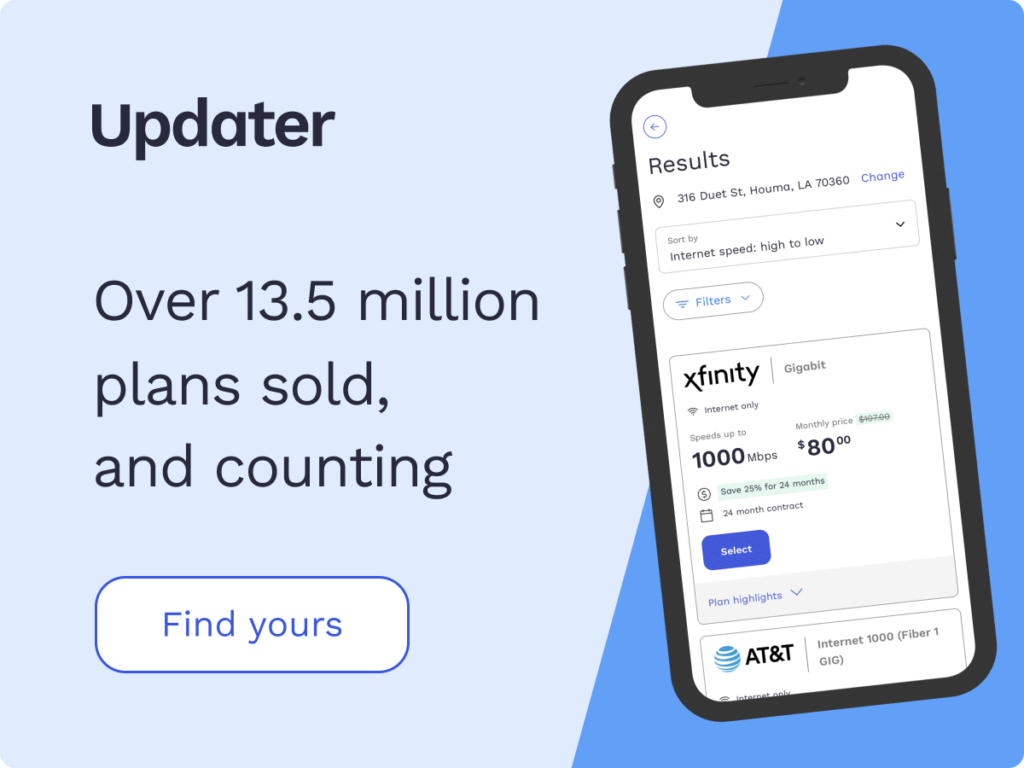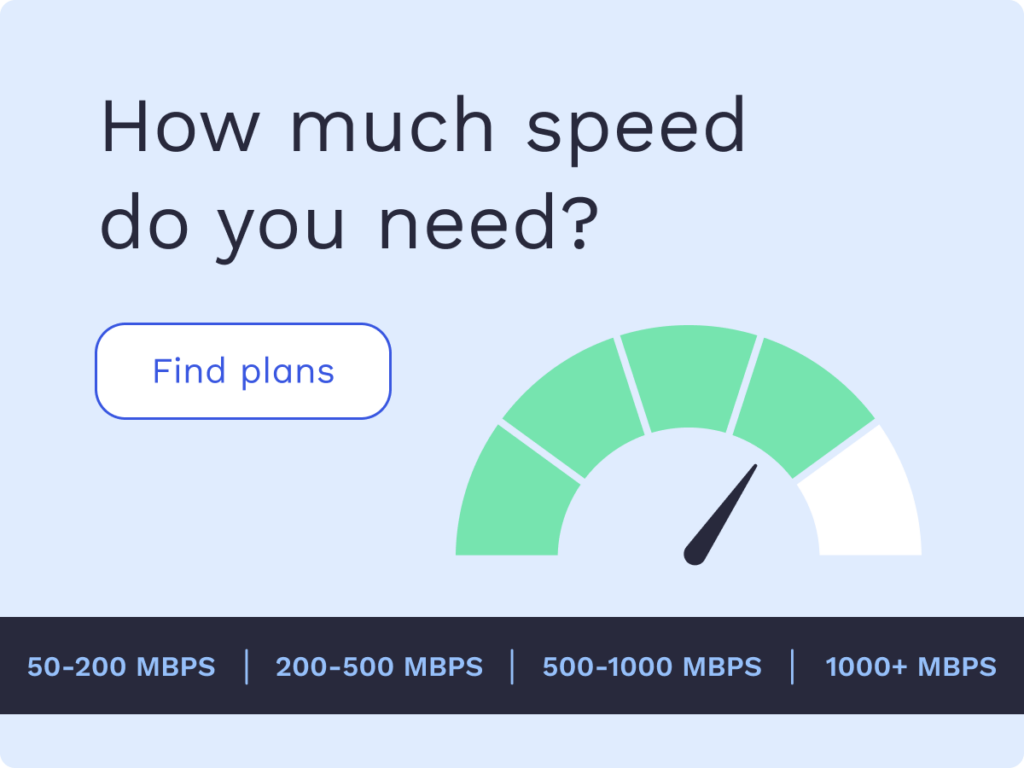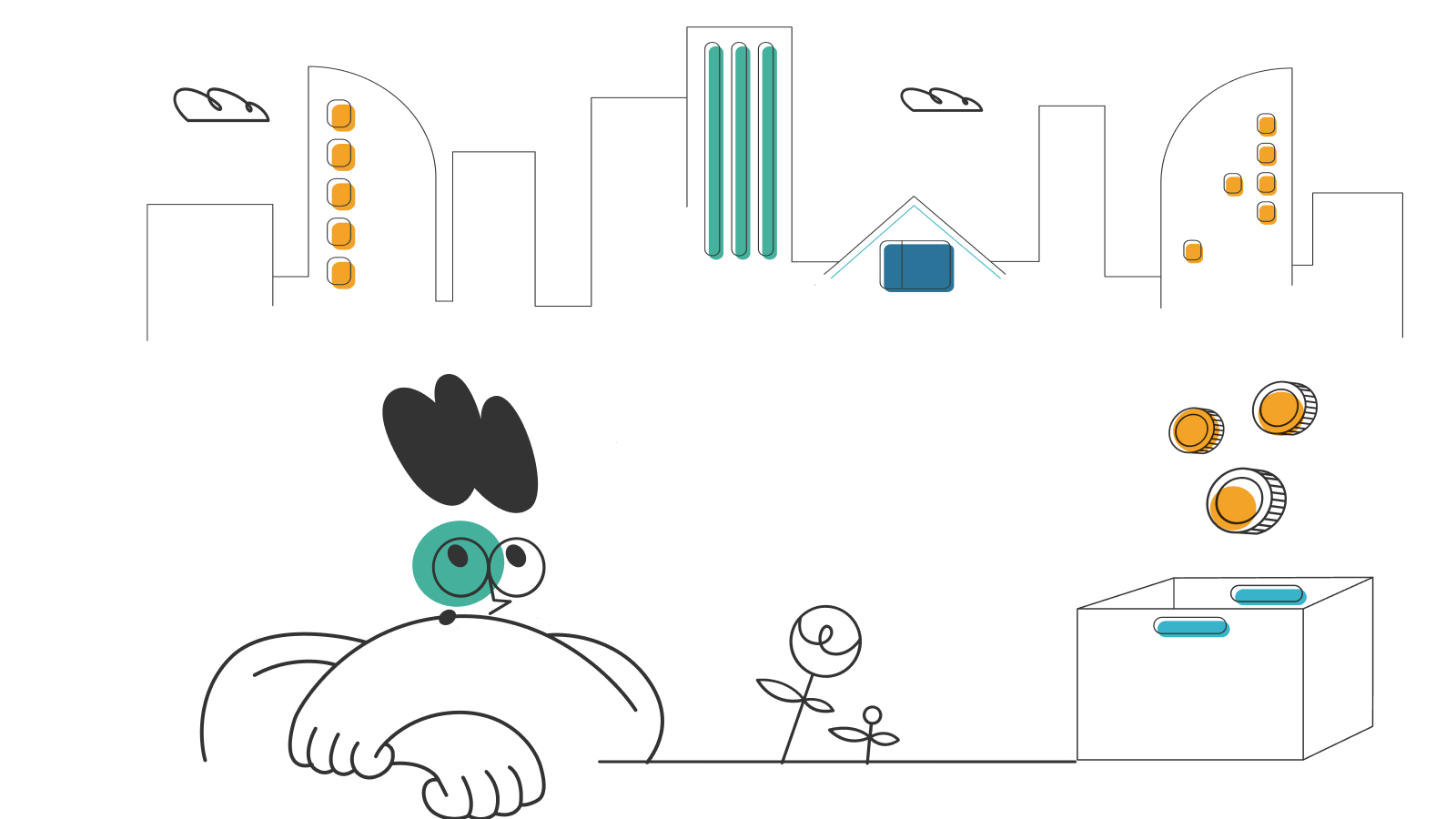How to Choose an Internet Service Provider

Nowadays, much of our personal and professional lives revolve around the internet, and having a reliable and high-speed connection is something everyone needs. There are plenty of internet service providers (ISPs) out there, and they keep increasing in number with each passing year. This can make it difficult to choose an internet connection that suits the needs of you and your household.
There are a number of things to keep in mind when choosing an ISP. Which is why we have prepared this guide to help you navigate the process and find the right ISP for your internet needs. This guide will help you understand how to weigh different ISPs against one another, decide what speed you need, as well as how you can sign up for a new connection or switch from your current provider.
- Find internet providers in your area
- Comparing internet plans
- Check for discounts and promotional offers
- Decide how much speed you need
- Testing your internet speed
- How to switch internet providers
Find internet providers in your area
The first step in choosing an ISP is finding out which providers offer services in your area. No ISP covers the entire country, which is why it is important to find those that are available at your address. If you live in a rural area, your options for choosing an ISP may be limited. But in most urban and suburban areas, homeowners should have at least a couple of options to choose from.
Finding internet providers that cover your area will help you gather all the suitable options you have available, and allow you to review them to see what each has to offer. Luckily, Updater allows you to see providers that cover your address and gives you the ability to compare them side-by-side.
Comparing internet plans
Once you have found ISPs that are available in your area, the next step is to evaluate and review the plans they offer. Every internet provider has predetermined plans that are designed to fulfill the requirements of certain customers. By going through the plans, you can determine which one works best for you. There are several things that you need to keep in mind when comparing different plans.
Speed
Having fast internet is something everyone wants when they need a connection for their home, as it allows you to browse the internet without experiencing any downtime or latency.
Internet speed is referred to as bandwidth, and is often measured in Megabits per second (Mbps). Speeds can be as low as 1Mbps, and can go up to one or more Gigabits per second (Gbps). In rural areas, the maximum bandwidth might be limited to 3 to 5Mbps, which is often due to internet services being delivered through DSL or satellite connections.
Another thing to keep in mind is that the speed mentioned in the plan isn’t always consistent. Internet speeds can fluctuate at certain times of the day when other devices are crowding your connection and can also be impacted by throttling if you have reached a data usage limit.
You should also consider how much bandwidth you need. Otherwise, you might end up getting a plan that is either insufficient or excessive, causing you to spend more than you need to. You can make use of an online bandwidth calculator, where you can factor in the number of wireless devices you have, as well as any streaming devices that require seamless connectivity. We’ll also give a quick breakdown of what you can expect from different speed tiers later in this guide.
Pricing
The next thing to consider when comparing plans from different ISPs is price. Simply going for the ISP that offers the fastest internet speeds isn’t enough — you also need to make sure that they offer a plan that’s within your budget. Most ISPs include the pricing for their plans on their website so that you have an idea of how much money you’ll need to pay to get certain speeds or bundled packages.
How much you’ll pay for your internet service varies depending on how much bandwidth you’ll get. After making a decision about the speeds you need and how many users you’ll have on your connection at one time, you can compare different plans to determine which offer enough speed while staying within your budget.
Internet pricing also tends to depend on the type of internet connection. For instance, satellite internet generally has the most expensive plans, while cable internet is often the cheapest.
Connection type
The connection type impacts the speed, performance, and signal strength of your internet service. There are several different types of internet connections, including cable, fiber, DSL, and satellite. Out of these, satellite internet is known to provide the highest bandwidth, but its signal strength can be unreliable because each packet of data has to travel thousands of miles before it can reach you.
Generally, DSL connections are known to be quite reliable because they use standard copper phone lines that already run to your home. Even in rural areas, you’ll find DSL connections because most of the US has access to phone service. In fact, 84% of the US population currently has access to DSL.
Fiber, on the other hand, utilizes ultra-thin glass strands that transport light in place of electricity. Fiber connections can offer gigabit speeds a hundred times faster than DSL, as light can travel swiftly through the fiber optic cables. This makes fiber more suitable for customers that require super-fast speeds, such as gamer or HD or 4K streamers.
Cable internet runs through an underground coaxial cable network. It’s typically faster than DSL and a better alternative if you plan to stream on several devices, upload large files, or play games online.
Contract length
Not all ISPs require you to sign a contract with them, but most of them have a one or two-year contract with an early termination fee that you have to pay if you want to opt out of the internet service. Usually, DSL, cable, or fiber connections have one-year contracts, while satellite internet comes with a two-year commitment.
Check for discounts and promotional offers
Apart from reviewing the different internet plans that ISPs offer in your area, you can also check to see whether they provide any discounts, deals, or bundles to attract new customers.
For instance, ISPs might waive the installation fee for new connections or offer a higher bandwidth for a lower price for the first few months. Likewise, some ISPs also offer special discounts for students. You may also get a better price if you bundle TV, phone, and the internet services together.
Decide how much speed you need
As mentioned above, it is important for you to determine the speed or bandwidth that you need before you can choose a suitable plan. When we consider bandwidth requirements, we are generally referring to download bandwidth.
According to the Federal Communications Commission (FCC), anything faster than 25Mbps is considered an “advanced service,” which is sufficient for 4 users or devices at a time with moderate to high use. However, if you have smart home devices or devices that support virtual or augmented reality, you will need bandwidth ranging between 100 and 250Mbps. Moreover, if you have devices that support a 4K display, you would need a higher speed to stream content without any buffering or lagging. Anything lower than 100Mbps would cause your movies and TV shows to freeze every now and then.
The following list gives a general breakdown of the speed ranges offered by many ISPs and what you can expect to do within each range.
1-5Mbps
Sending emails, reading articles, browsing online, streaming content on a single device.
6-40Mbps
HD streaming on up to 4 devices, online gaming, powering 1-2 smart devices.
41-100Mbps
4K streaming on up to 4 devices, online multiplayer gaming, instant downloads, powering 4-5 smart devices.
101-500Mbps
4K streaming on more than 5 devices, instantly download large files, powering more than 5 smart devices.
501-1000Mbps
4K streaming for more than 10 devices, uninterrupted and instant downloading, heavy online gaming, simultaneous use of multiple devices.
1-5Gbps
4K streaming on more than 20 devices, unlimited usage across 20 or more connected devices.
For most households, having an internet speed up to 25Mbps is sufficient, even if someone works from home. However, if you actively use video calling or are into online multiplayer gaming, then you might want to consider plans with bandwidth between 50 and 100Mbps.
Testing your internet speed
Once you have a clear idea of your speed and bandwidth requirements, you can find out how much speed is provided by your current internet service by using a speed test. Not only does the speed test provide you with a realistic amount of bandwidth that you get from your existing connection, it also helps you compare the internet speed with some of the best ISPs available in your area.
By testing your internet speed, you will be able to shortlist ISPs that perform better than your current internet service, and you can focus on their pricing and plans.
Another benefit of testing your internet speed is that it will help you find out how much bandwidth you are getting right now. Then, if needed, you can consider plans that provide a higher bandwidth than your current plan.
How to switch internet providers
Switching ISPs means that you will have to terminate your existing connection and sign up for new service at the same time. Before you do anything, make sure to check the terms of your current plan, i.e. whether you are under a contract or service agreement.
If you signed a contract, you may have to pay an early termination fee (if any) as mentioned in the contract terms. The fee usually ranges between $10 and $15 for each month left on your contract. For instance, if you have 5 months left on your contract, you could have to pay $50 to $75 for terminating early. This amount will be in addition to what you might owe for your last bill.
Apart from the early termination fees, you are also responsible for returning any equipment that the ISP gave or rented to you. Some ISPs collect the equipment from you, while others require you to return them at their office or a designated drop-off point. If you don’t return the equipment, you might be charged additional fees.
Many ISPs also offer a trial period. This allows you to cancel the subscription without penalty if you do so within the specified time frame, which is typically 14 or 30 days. This way, if you are unhappy with the service or if you have found something better, you can make the switch without paying for it. Make sure that you check whether your connection is still in the trial period. This will save you from paying any early termination fee.
Another thing to keep in mind while switching ISPs is that when you sign up for new internet service, you might have to wait a couple of days before the installation team comes by and sets up your connection. If you get your existing connection cancelled before even signing up for the new one, you will have to spend a couple of days or even up to a week without internet access.
*Pricing varies by location and availability. Speeds may vary. All prices subject to change; for current pricing and availability visit our internet service page. Prices as of 3/24/22.
Disclosure | Updater articles are based on our own data and research, independent from partner relationships. We are not compensated by partners for information and opinions presented here. Our Editorial Terms of Service can be found here.














